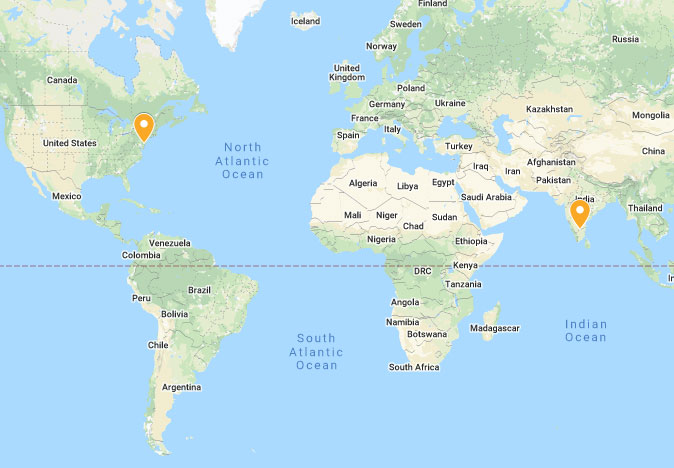HindSight 20/10 is the innovative SaaS (Software as a Service) benchmarking platform that improves your performance with its industry-wise benchmark data.
For any specific departmental function or process, the platform allows you to compare vital operational efficiency metrics — namely “Cost” and “Headcounts” — against similar industry peers.
Do-It-Yourself Approach (DIY) Vs. Get it done ApproachOur “Do-it-Yourself” approach lets our registered users run industry benchmark comparisons without needing any benchmarking or industry expertise. The platform allows for selecting a list of competitors to include in the peer comparison and benchmarking metrics specified by SIC Industry, Region, or Revenue Size, granting our users full control over their analysis instead of relying on external benchmarking vendors metric specification.
The HindSight 20/10 platform allows you to outperform your competition and recognize your opportunity costs by discovering the right choices clearly and well in advance at the time of decision making.
Why are we HindSight 20/10?Hindsight, as you are probably familiar with, is the clarity with which you can understand an event or a situation after it has already happened. With the wisdom of hindsight, it becomes easy to know what the right decision could have been, given the outcomes. In hindsight, choices and patterns become painfully obvious, which were not from the outset.
In Optometry, the baseline to measure a person’s vision is to test how well they can see things from a twenty-foot distance. An average person who has 20/20 vision can see things clearly from a 20-foot distance. With 20/10 vision, you would effectively be superhuman, with the capacity to see clearly from 20-feet what others can only see from a distance of 10-feet.
We, at HindSight 20/10 have a vision to help our clients access the wisdom of hindsight without having to suffer through their decision before understanding what could have been done better. We aim to help you plan well in advance and aspire to help you keep yourself ahead of the curve rather than worry about what should have been done better in hindsight!

Competitive benchmarking enables you to know your competitors in terms of their business processes, performance metrics, and their best practices and learn from them. These are primarily measured on three dimensions namely Process Quality, Cycle Time, and Cost.
Every company wants to be the best. Benchmarking allows you to be the best among your peers. For example, as people costs constitute approximately 60% of the total departmental functional cost, comparing headcounts of a specific departmental function or functional process with outperforming peers’ in similar industries and revenue classes allows you a greater insight on your potential cost savings.
Benchmarking also enables you to have a competitive edge in working with your customers.

For benchmarking comparison, the HindSight 20/10 Platform has categorized every company based on their Standard Classification Code (SIC). The industries are broken down into 10 Divisions (A-J) and each is then divided into Major Groups (2 digits) and then into specific 4-digit numbers.
The Following are the ensuing SIC DIVISIONS with SIC CODES in parenthesis:

Division A includes establishments primarily engaged in agricultural production, forestry, commercial fishing, hunting, and trapping, related services.

Division B includes all establishments primarily engaged in mining. The term mining is used in a broad sense to include the extraction of minerals occuring naturally: solids, such as coals and ores; liquids such as crude petroleum; and gases such as natural gas.

Division C includes establishments primarily engaged in construction. The term construction includes new work, additions, alterations, reconstruction, installations.

The manufacturing division includes establishments engaged in the mechanical or chemical transformation of materials or sudstances into new products. These establishments are usually described as plants, factories, or mills and characteristically use power driven machines and materials handling equipment.

This divison includes establishments providing, to the general public or to other business enterprises, passenger and freight transportation, communications services, or electricity, gas, steam, water, or sanitary services, and all establishments of the United States Postal Service.

This divison includes establishments or places of business primarily engaged in selling merchandise to retailers; to industrial, commercial, institutional, farm, constryction, contractors, or professional business users; or to other wholesalers; or acting as agents or brokens in buying merchandise for or selling merchandise to such persons or companies.

This divison includes establishments engaged in selling merchandise for personal or household consumption and rendering services incidental to the sale of goods. Generally, retail establishments are classified by kind of business according to the principal lines of commodities sold ( groceries, hardware, ets. ), or the usual trade designation ( drug store, cigar store, etc. ).

This divison includes establishments operating primarily in the fields of finance, insurance, and real estate. Finance includes depository institutions, non-depository credit institutions, holding (but not predominantly operating) companies, other investment companies, brokers and dealers in securities and commodity contracts, and security and commodity exchanges.

This divison includes establishments primarily engaged in providing a wide variety of services for individuals, business and government establishments, and other organizations.

This divison includes the executive, legislative, judicial, administrative, and regulatory activities of Federal, State, Local, and International governments.
This report provides benchmarking comparisons between user-selected industry peers and a target company of your choice for the reported SG&A cost. It includes an analysis of overall SG&A expenses comparison, alongwith a comparison of Revenue CAGR, Operating Profit Margin (EBIT %), Overall Employee Productivity (Revenue per Employess) and Gross Margin (%) within the selected peer group. The platform also provides an "industry-only" benchmark for the selected peers if you choose not to submit your target company data for comparison. The attached sample deliverable illustrates the typical output of a functional comparison, focusing specifically on the Finance function.
This report provides benchmarking comparisons between user-selected industry peers and a target company of your choice. It includes an analysis of the overall Cash Conversion Cycle (CCC), along with a comparison of various working capital components—namely Days Sales Outstanding (DSO), Days Inventory Outstanding (DIO), and Days Payable Outstanding (DPO)—within the selected peer group. The platform also offers an industry-only benchmark for the selected peers if you choose not to submit your target company data for comparison. The sample deliverable illustrates the typical output of a benchmarking analysis—similar to the example provided for Finance Function Costs. Please note: This working capital report is not available for the Finance, Real Estate, and Insurance industry sectors, covering all 2-digit SIC codes ranging from 60 to 67.
Kammanahalli, Bengaluru 560084.
Karnataka, India
Wilmington,
Delaware 19801.
